| Fire & Sword:
Scenario Preview, Part Four
By Mike Bennighof, Ph.D.
November 2024
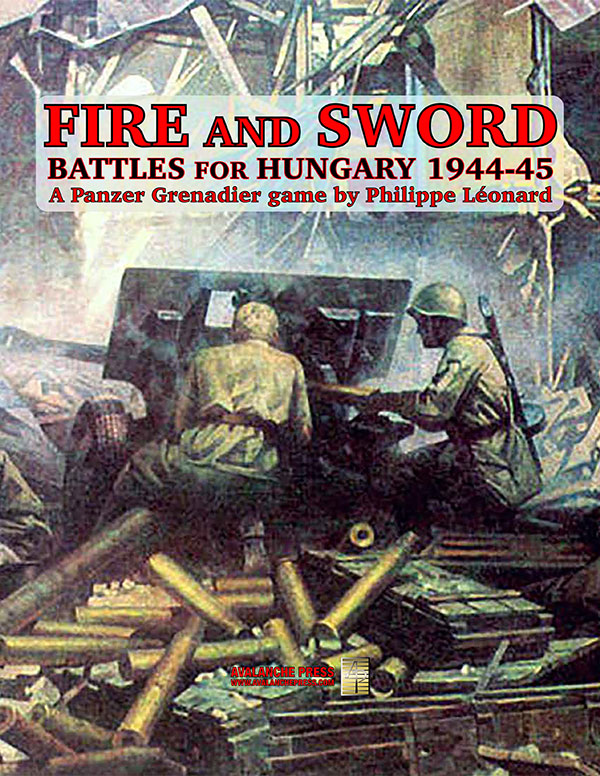 Until we eclipse it with something even grander, Fire & Sword represents the peak of the Panzer Grenadier game series. Philippe Léonard had a vision, and he’s sued the game to tell the story of the Soviet advance on and encirclement of Budapest. The Germans decided to fight for Budapest, for what were probably not the soundest reasons, and the result was one of World War II’s most intense campaigns. Until we eclipse it with something even grander, Fire & Sword represents the peak of the Panzer Grenadier game series. Philippe Léonard had a vision, and he’s sued the game to tell the story of the Soviet advance on and encirclement of Budapest. The Germans decided to fight for Budapest, for what were probably not the soundest reasons, and the result was one of World War II’s most intense campaigns.
We included just a few battles from this campaign in the old, long out-of-print Road to Berlin, but they were just a scattered selection with no connection between them. All of Philippe’s scenarios are brand-new, and they unfold the story of the campaign in nine chapters. In each chapter, it’s the scenarios that form the narrative, so you can play along with the action. And then there’s a battle game to link them all together.
It's the work of an outstanding game designer at the top of his craft. Let’s look at some more of it.
See the rest of the preview here:
• Scenario Preview, Part One
• Scenario Preview, Part Two
• Scenario Preview, Part Three
• Scenario Preview, Part Five
• Scenario Preview, Part Six
• Scenario Preview, Part Seven
Chapter Four
Red Crossings
After his offensive on Csepel Island stalled, Malinovsky realized that the forces assembled on the island lacked the strength to guarantee a quick encirclement of Budapest. He therefore ordered Lt. Gen. Ivan Timofeevich Shlemin, commanding 46th Army, to strengthen his left flank by moving more rifle divisions to the riverbank together with the 2nd Guards Mechanized Corps plus nearly all of his heavy artillery and combat engineers. On 27 November, Malinovsky ordered the 46th Army to cross the Danube and bypass Budapest from the west. The Danube is between 475 and 600 meters wide along the Erd-Adony.
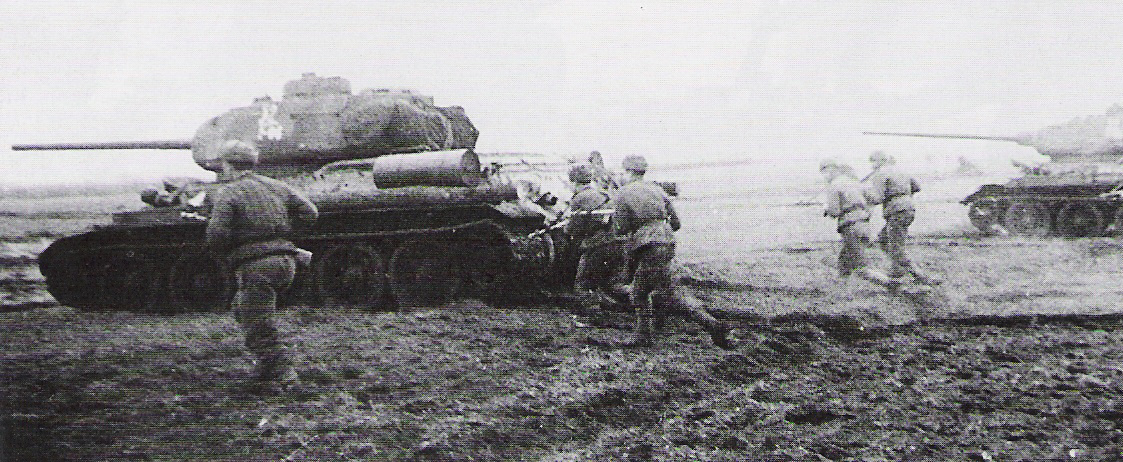
Soviet T34/85 tanks advance on Budapest, 1944.
The crossing, scheduled to start on 30 November, had to be postponed due to bad weather. Rains and a thaw caused the ice to move and brought about a sharp fluctuation in the river’s water level. The attackers dealt with extremely unfavorable terrain: the left (eastern) bank of the Danube from where they would launch their boats and ferries is lowland, cut by a thick network of channels, canals, lakes and boggy marshes. The uninterrupted rains had raised the water level in low-lying areas and made the dirt roads impassable for both horse-drawn and auto-transport.
Schlemin decided to launch the attack with the 23rd and 37th Rifle Corps (108th, 59th and 4th Guards Rifle Divisions and two regiments of the 316th Rifle Division), employing the 2nd Guards Mechanized Corps as an exploitation force to advance on Ercsi – Martonvásár – Etyek. That succession of towns would bring the Soviet spearheads about halfway to the Danube on the opposite side of Budapest.
The assault divisions would cross the river along a front approximately 20 kilometers long. The 23rd Rifle Corps’ sector extended from Érd to Ercsi (eight kilometers), while the 37th Rifle Corps took charge of the wider line from Ercsi to Adony. Impressive firepower would back the assault crossing: 36 artillery and mortar regiments, with an average density of 47 guns per kilometer. The 38th Anti-Aircraft Division secured the crossing area, along with smoke from the 670th Chemical Barrier Battalion.
Despite that abundant support, Schlemin decided to launch a night attack without any artillery and air preparation to guarantee a surprise effect. That was a risky decision. Since the river is so wide, the Soviet boats would need between 20 and 30 minutes to cross and it’s hard to imagine that the Axis observers would fail to notice the approach maneuvers. The organic engineer units of the 46th Army did not have river crossing equipment so that they were reinforced with the 1st and 2nd Pontoon Brigades, 8th Pontoon-Bridge Regiment and 51st Engineer-Sapper Brigade. Ercsi would serve as the main ferry and bridging point.
Due to strong Axis resistance, the entire crossing operation soon fell behind schedule. According to the plan, by dawn of Day One (5 December), all Soviet divisions should have crossed to the western bank. This was not to be. While planning the assault, the staff of 46th Army made a capital error: they distributed the river-crossing equipment in even shares among the divisions of the first wave. This would not allow Shlemin to quickly gather his forces in the bridgehead and commit them at the most decisive point during the initial assault.
Despite considerable delays and disrupted timetables, the first echelon eventually met their objectives and, by the morning of 5 December, had established a bridgehead ten kilometers wide and two kilometers deep, which was by no means deep enough when a series of increasingly-powerful Axis counter-attacks began. In the following days, the Soviets continued to expand their bridgehead despite increasing resistance, but their advance became very slow before the defenders stopped them on the Margit defensive line.
At this point Malinovsky decided to suspend 46th Army’s offensive. The crossings had been made possible by the advance on Ercsi by troops of Tolbukhin's 3rd Ukrainian Front. Malinovsky’s crossing with its heavy losses of manpower and equipment was, according to some historians, unnecessary and meaningless as Tolbukhin attacking from the Southwest, moved almost unhindered towards the Hungarian capital at a good pace.
Stalin himself fostered rivalry between Soviet marshals, and such behavior would continue until the end of the war and afterwards. Malinovsky, whose armies, with the help of Romanian troops, also attacked the north-eastern part of Budapest on the Pest side, wanted to reap the laurels for encircling the Hungarian capital. So, he forced the flawed and militarily unnecessary crossing of the Danube at all costs.
Daily Content includes no AI-generated content or third-party ads. We work hard to keep it that way, and that’s a lot of work. You can help us keep things that way with your gift through this link right here.
Scenario Fourteen
Landing at Ercsi
4 December 1944
Ercsi, Hungary
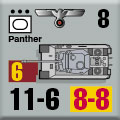 The riverside town of Ercsi, on the boundary between the Soviet 23rd Rifle Corps and 37th Rifle Corps sectors, would form the base of supply for both formations plus the 2nd Guards Mechanized Corps expected to exploit from there to the north-west. The riverside town of Ercsi, on the boundary between the Soviet 23rd Rifle Corps and 37th Rifle Corps sectors, would form the base of supply for both formations plus the 2nd Guards Mechanized Corps expected to exploit from there to the north-west.
Along the riverbank, the defenders had spent days reinforcing their positions. Between eight and ten firing pits and two or three machine-gun positions supported every 100 meters of trench line, along with small earthen bunkers. However, no other field fortifications had been constructed behind the river trench line. Upon breaching the Axis main line of resistance, the Soviets would be able to move inland easily. At 2300 on 4 December, the first assault groups began crossing through the convenient fog without any artillery preparation.
Conclusion
The 271st People’s Grenadier Division met the crossing with a wall of artillery and machine-gun fire. At 2340, the 46th Army answered with an intense artillery barrage directed at the newly-revealed Axis firing positions. Axis fire destroyed many Soviet boats in mid-river but eventually most of the crossing troops made it to the opposite bank, either undisturbed or with minimal loss. South of Ercsi, the initial assault secured the shoreline during the first hours of assault, so that 59th Guards Rifle Division could cross almost without loss.
Ercsi itself lay in the sector of the 108th Guards Rifle Division. The fighting in the city lasted for a long time due to the resistance of the II/977th People’s Grenadier Regiment. That German battalion even fought until 6 December in some parts of the city.
Further north, a German counter-attack repulsed the landing by a 99th Rifle Division battalion. Even further north, the 1077th Rifle Regiment of the 316th Rifle Division crossed with fewer losses but had to fight the whole day just to secure its own slender bridgehead. It took the 46th Army two to three hours (instead of the planned one to one and half) to transfer the first assault wave across.
At 0200, the Soviets managed to get into the first Axis trench line but only secured it after two more hours of fighting. Heavy street fighting continued through the rest of the night and the entire morning, completely disrupting the Soviet timetable. At dawn, the army’s chemical troops laid smokescreens to protect the ferry crossing and by 1100 the 108th Guards Rifle Division finally seized Ercsi after fierce street battle.
Notes
It’s a river crossing scenario, but a little different from what we’ve seen in other Panzer Grenadier games since the Danube is very wide. So it’s a little like an opposed amphibious landing, and everyone has lots of artillery and plenty of firepower. It’s a fierce brawl of a scenario, with the goals of each side evident even without the formal victory conditions.
Scenario Fifteen
The Crossing at Érd
4 December 1944
Érd, Hungary
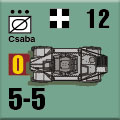 The Soviet 316th Rifle Division would attempt to cross the Danube at the town of Érd, the crossing point closest to Budapest. The western bank, defended by four battalions of the German 271st People’s Grenadier Division, was higher than the eastern bank with a cliff-like hill just south of the town. They had plenty of artillery behind them plus support from an eclectic mixture of Hungarian units, plus a German assault-gun brigade, and had dug trenches around the hill. The Soviet 316th Rifle Division would attempt to cross the Danube at the town of Érd, the crossing point closest to Budapest. The western bank, defended by four battalions of the German 271st People’s Grenadier Division, was higher than the eastern bank with a cliff-like hill just south of the town. They had plenty of artillery behind them plus support from an eclectic mixture of Hungarian units, plus a German assault-gun brigade, and had dug trenches around the hill.
Conclusion
While the attacking rifle battalions deployed pontoons and boats at Érd, the Germans dug in on the heights called down heavy artillery fire. About three-quarters of the attackers were destroyed, and only small groups reached the steep bank of the Danube, where the Germans engaged them in a confused melee. A Soviet company reached the top of the hill and seized part of the trench, holding on despite German tank-supported counterattacks. More Soviets joined them, but heavy fighting continued as Hungarian infantry and gunboats joined the Germans and the Soviets deployed still more artillery support. Heavy fighting continued for days, but on 8 December the Soviets could finally consider the village of Érd secured.
Notes
It’s another river crossing, and this time the Germans have a counter-attacking force with armor, which is a problem for the Soviets since their own limited anti-tank capability is on the wrong side of the big wide river. But they do have lots of artillery, and they’re going to need it.
Scenario Sixteen
Ercsi Bridgehead
6 December 1944
West of Ercsi, Hungary
 Lt. Gen. Ivan Timofeevich Shlemin of 46th Army ordered his troops holding the Ercsi Bridgehead to commit all of their battalions and go over to the offensive. The Soviets achieved two deep penetrations from the bridgehead at Ercsi: one across the Váli-víz stream westwards and another at the railroad running to Érd, in the north. The German 271st People’s Grenadier Division, reinforced with assault guns, struck back with a counter-attack aimed directly at the Ercsi railroad station. Lt. Gen. Ivan Timofeevich Shlemin of 46th Army ordered his troops holding the Ercsi Bridgehead to commit all of their battalions and go over to the offensive. The Soviets achieved two deep penetrations from the bridgehead at Ercsi: one across the Váli-víz stream westwards and another at the railroad running to Érd, in the north. The German 271st People’s Grenadier Division, reinforced with assault guns, struck back with a counter-attack aimed directly at the Ercsi railroad station.
Conclusion
The counterattack hit the advancing 311th Guards Rifle Regiment (from 108th Guards Rifle Division) and forced them onto the defensive. The elements of the Soviet 37th Guards Tank Brigade that had already crossed the river as well as open-topped SU76 assault guns responded to the infantry’s call for help. Together the armor and infantry blunted the German attack and resumed their own advance, securing the Ercsi railway station.
Notes
This time the Germans just have to get within sight of the river, but that’s not going to be easy. They have numbers and artillery on their side, and they have some armor, but the Soviet position is strong and it’s backed by anti-tank guns and self-propelled artillery.
Scenario Seventeen
A Bit Much
7 December 1944
Baracska, Hungary
 Ordered to support the German defense of the Danube crossings, Százados (Captain) Sándor Hanák led his Hungarian 10th Assault Artillery Battalion from its positions at Székesfehérvár eastward. One battery of the 1st Assault Artillery Battalion, without orders, rolled out of its own encampment and followed, giving the captain a total of 15 new Zrinyi II assault guns. On their arrival, Lt. Gen. Martin Bieber of the German 271st People’s Grenadier Division sent them against the village of Rácszentpéter. Hanák asked if he should also capture the railway embankment on the other side of the town, but Bieber told him, “I suppose that’s asking a bit much.” Ordered to support the German defense of the Danube crossings, Százados (Captain) Sándor Hanák led his Hungarian 10th Assault Artillery Battalion from its positions at Székesfehérvár eastward. One battery of the 1st Assault Artillery Battalion, without orders, rolled out of its own encampment and followed, giving the captain a total of 15 new Zrinyi II assault guns. On their arrival, Lt. Gen. Martin Bieber of the German 271st People’s Grenadier Division sent them against the village of Rácszentpéter. Hanák asked if he should also capture the railway embankment on the other side of the town, but Bieber told him, “I suppose that’s asking a bit much.”
Conclusion
Hanák’s assault guns, accompanied by their organic assault infantry company and the renegade 3rd Üteg (battery) from the 1st Battalion, rolled down the highway and into the village, followed by some People’s Grenadiers. They destroyed an anti-tank battery and shot up several strong points before reaching a deep ditch alongside the railway embankment, that the Zrinyis could not cross. Doubling back, Hanák returned to the village and attacked the shaken Soviets again, causing a panicked retreat that left behind 14 anti-tank guns (half of them intact) and over 220 dead. The Hungarians lost five Zrinyi vehicles to breakdowns and had six men wounded. Bieber handed out Iron Cross decorations to all of the Hungarian officers, including the commander of the 3rd Üteg.
Notes
It’s not a very large scenario, but it does feature high-morale armored Hungarians trying to stomp all over the Soviet defense, which isn’t an easy task: the Zrinyi assault guns are bolted together out of scrap iron, while the Soviets have the weaponry needed to shred them plus good morale of their own. But there are a lot of Zrinyis, and they are mobile while the anti-tank guns are not.
Scenario Eighteen
The Panzer Reserve
8 December 1944
Baracska, Hungary
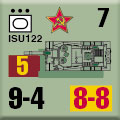 With more troops pouring into the Soviet bridgeheads and a breakout apparently imminent, the German Army Group South released its 8th Panzer Division for a spoiling attack. The Soviets had begun to ferry their own armor across the river, and the panzers would be expected to throw them back before they could rampage westwards and unhinge the Axis defenses. German air attacks failed to make much of an impression, and late arrivals of fuel and some of the division’s armored personnel carriers meant that the dawn attack actually stepped off at mid-day, after the Soviet armor had already begun their own advance. With more troops pouring into the Soviet bridgeheads and a breakout apparently imminent, the German Army Group South released its 8th Panzer Division for a spoiling attack. The Soviets had begun to ferry their own armor across the river, and the panzers would be expected to throw them back before they could rampage westwards and unhinge the Axis defenses. German air attacks failed to make much of an impression, and late arrivals of fuel and some of the division’s armored personnel carriers meant that the dawn attack actually stepped off at mid-day, after the Soviet armor had already begun their own advance.
Conclusion
Once the panzer attack finally began, with infantry riding on tanks, it ran into a strong anti-tank line and lost three Panther tanks before German air support eliminated the guns and the panzers rolled on. But another anti-tank position, this time supported by Soviet armor, proved much more difficult to penetrate. Soviet air support now made itself felt while the Soviet armor counter-attacked. The Germans broke off their attack in the early evening, having failed to break through to the river. They would try again on the following day.
Notes
A tank battle! Panthers against T34/85’s, with both sides getting help from airplanes. The Germans are on the attack, and they have a steep set of objectives, but even once they take them the Soviets have the armored firepower to take them back. This is what wargames are all about.
Scenario Nineteen
North of Ercsi
9 December 1944
Martonvásár, Hungary
 Despite repeated German counter-attacks throughout 8 December, the Soviets held on in the town of Érd. During the same day, the 2nd Guards Mechanized Corps assembled in the area of Ercsi and concentrated its forces around Ráckeresztúr, between Ercsi and Érd. The German 8th Panzer Division gathered its full strength (70 armored vehicles and two regiments of motorized infantry) north-west of the Soviet bridgehead and committed all of its forces at 0630 in an attempt to drive the Soviets into the river. Despite repeated German counter-attacks throughout 8 December, the Soviets held on in the town of Érd. During the same day, the 2nd Guards Mechanized Corps assembled in the area of Ercsi and concentrated its forces around Ráckeresztúr, between Ercsi and Érd. The German 8th Panzer Division gathered its full strength (70 armored vehicles and two regiments of motorized infantry) north-west of the Soviet bridgehead and committed all of its forces at 0630 in an attempt to drive the Soviets into the river.
Conclusion
At Martonvásár, the Germans quickly pushed back the Soviet 99th Rifle Division. The Soviets had restored the anti-tank positions smashed by the Germans on the previous day, and after their initial gains the Germans ran into stout resistance three kilometers south-east of the village. They ground slowly forward, until they met another anti-tank barrier in a small forest close to Sándorszállás, including American-made 90mm anti-aircraft guns. Infantry, tanks, and self-propelled guns helped cover the blocking position’s anti-tank guns. The forward armored elements of the 2nd Guards Mechanized Corps formed a wall of steel between the Válí-Viz stream the Danube.
After 1000, the assault guns of the German Assault Artillery Brigade 239 and Sándor Hanák’s redoubtable Zrinyis supported a battle group of People’s Grenadier Regiment 978 in a bold dash towards Érd to recapture lost ground. The Germans stormed the Soviet positions but only regained part of the town and hill. At around 1300, they took the southern part of Érd. The Hungarian assault artillery again distinguished itself and recaptured Érd. An anti-tank gun set one of the Zrinyi on fire; the Hungarians were surprised to find that these anti-tank guns were served by women.
In the evening, the 8th Panzer Division stopped the attack and moved into reserve and an official inquiry investigated the division’s two-day failure. But thanks to determined Axis resistance and strong counterattacks, the Soviets likewise could not advance any further and Malinovsky suspended the 46th Army’s offensive.
Notes
An irresistible force (a large, tank-supported German force, later reinforced by Hungarian infantry and armor) crashes into an immovable object (a strong Soviet defending force occupying a well-entrenched position, with anti-tank capability and armor support). This is a big, brawling scenario, and with the Danube at the Soviets’ back, they have little choice but to hold on as best they can.
And that’s all for Chapter Four. next time, it’s Chapter Five.
You can order Fire and Sword right here.
Sword of Fire
Fire & Sword
Stalin’s Tanks
Eastern Front Artillery
Retail Price: $145.96
Package Price: $120.00
Gold Club Price: $96.00
Take up the Sword of Fire Here.
Sign up for our newsletter right here. Your info will never be sold or transferred; we'll just use it to update you on new games and new offers.
Mike Bennighof is president of Avalanche Press and holds a doctorate in history from Emory University. A Fulbright Scholar and NASA Journalist in Space finalist, he has published an unknowable number of books, games and articles on historical subjects.
He lives in Birmingham, Alabama with his wife and three children; he misses his dog, Leopold.
Daily Content includes no AI-generated content or third-party ads. We work hard to keep it that way, and that’s a lot of work. You can help us keep things that way with your gift through this link right here. |
